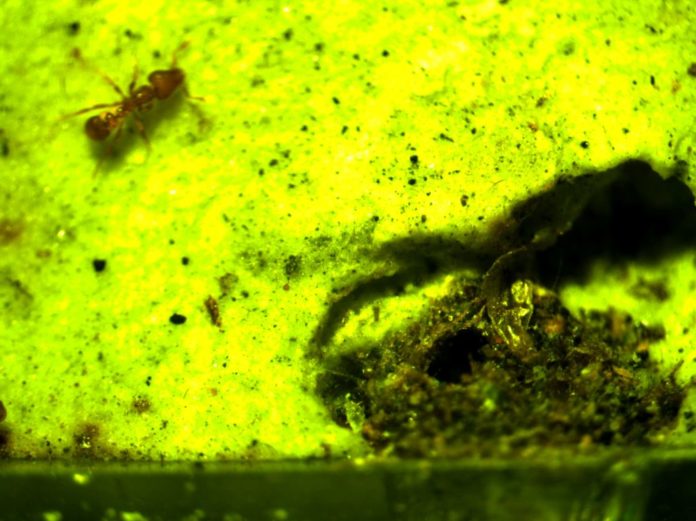According to a recent study genetically selfsame ‘clonal ants’ manifest staggering multiformity in their allurement to the sweetness. While the disparity in behavior and choices among a species are normally attributed to genetic disparity, the cause of multiple ‘phenotypes’ is less precise for ants that are selfsame clones.
In such case, colonies of some ant species such as Strumigenys membranifera reproduce by asexually cloning themselves, so have the same genes, with the barring of random mutations. Thus, their reactions to sweetened water should be identical if ascertained from birth.
Ecologist Eisuke Hasegawa of Hokkaido University and team tested how strong a sucrose solution had to be to get individual ants to drink it within one minute of detection. This indicated the ants’ ‘response threshold’.
They further discovered the exceptional discrepancy between 82 workers from two groups of cloned ants. Some preferred a 1% sugar solution (the equivalent of diet soda), while others wouldn’t drink until it reached 10% (more like a regular soda).
The team had three hypotheses, first is that the threshold could be set during the larval stage and remain unchanged, second, it could increase or decrease in one direction with age, or third one it could be randomly ascertained by external factors during adulthood.
Post this they found ants that recently transformed from larvae to adults had a much stronger choice for the more concentrated sucrose solutions than the older adults. Furthermore, 44 % of adult ants shifted their threshold between the first test and a second test one month later. Some heave, others went down, while other individuals maintained their indigenous choices.
These investigations have shown that threshold is not set at the larval stage and can change in adults over time, but is not ascertained by aging alone. That decisively suggests epigenetic modifications, chemical modifications to DNA that impacts gene functions, are involved, the researchers argue.
They plan to conduct further studies to confirm epigenetic changes are occurring in the clonal ants’ genomes.
The purpose for all this variety remains vague but ecologists have perceived that response threshold disparity helps prolonged colony survival of social insects like bees and ants. For instance, Hasegawa’s team antecedently discovered that colonies with both active and lazy ants had reduced short-term productivity, but persisted longer than colonies with only active workers.
Hasegawa said, “Our study shows even clonal colonies have behavioral variations that could affect the survival of the colon. This is of significance in the sense that temporal epigenetic regulation could lead to permanent changes in the genome, and therefore evolution.”
